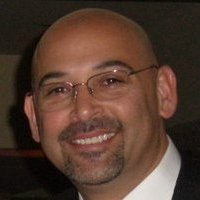 By David Kushan, Founder, Healthcare IS
By David Kushan, Founder, Healthcare IS
Twitter: @HealthcareIS
Revenue cycle management and operations are essential to the health of any healthcare institution, so a breakdown in financial performance can have serious ramifications. Leadership should work proactively to prevent any disruptions that could negatively impact revenue during a large-scale operational change, especially something as far-reaching as an EHR platform implementation.
During the implementation process, clinical concerns often supersede RCM, though the two functions are closely linked within the final build. In order to find the ideal balance, and factor both teams’ concerns, hospitals should leverage a combination of internal staff and consultants to work with the project team. Internal resources can help provide institutional and process knowledge, while consultants can bring a broader, contextualized understanding of the platform, the implementation process, and potential impacts for hospital functions. Of course, challenges usually arise when managing the relationship between them. Here are some things to consider.
Perspective Matters
Internal staff members have valuable knowledge that project leaders can use to their advantage, but that knowledge might be siloed. Individual departments may have a hard time seeing the bigger picture or fully understanding the ways in which their workflow changes might impact other teams’ work. Their experience may be too narrowly focused on one function, and they may see the entire hospital’s needs through their lens. Emphasizing the interrelationship between revenue and clinical staff is important for project success.
Consultants can serve as outside resources, capable of bridging the concerns of disparate stakeholder groups and ensuring that every department is represented in the process. A well-planned implementation engages with every impacted department to understand how their needs and expectations can be balanced. In effect, this will foster the interoperability functions needed for a successful implementation.
Except for organizations with extensive experience and proven success (such as large hospital systems), most institutions will need to bring in consultants to ensure that they have the necessary level of experience and project management skill. This is especially true for an implementation’s RCM aspects. Well-qualified consultants understand that RCM priorities must underlie the entire process, especially as reimbursement is increasingly tied to clinical outcomes and patient satisfaction. They can help leverage data about charge capture and reimbursement with an understanding of RCM pain points to better customize EHR for a hospital’s unique needs.
No Implementation without Representation
All large-scale projects should factor in the needs and opinions of each function, with representatives present when critical decisions are made. In assessing an EHR implementation, hospitals should work with RCM leadership to identify which team members can provide valuable insights. Involving these individuals in the process will ensure that perspectives of people on the ground are incorporated into the overall approach. Nevertheless, it’s still extremely valuable to get a top-down perspective from outside of the organization. This is where consultants come in.
A Top-Down View
Staff members are often (understandably) very protective of their territory. However, if everyone in the organization focuses only on their department’s concerns, the result will be a constant battle over implementation project priorities. If one team’s concerns win out, it can be detrimental to others. This presents a serious hurdle to implementation projects, which require a high degree of integration between teams.
An outside perspective can often cut through some of the divisions within an organization and offer a better understanding of how all core functions work together. Revenue and clinical teams should work collaboratively to optimize both clinical and financial operations. While clinicians may be resistant to having some of their processes shaped by revenue concerns, consultants can bridge this divide.
Consultants should understand the relationships between competing concerns and develop an approach that brings together essential elements from each impacted area. Bringing experience from past implementations, and approaching issues using frameworks established during similar projects, gives consultants a perspective that is often missing internally.
Building a Dialogue
Relationships between internal staff and consultants can be complex, but with some effort, they’re easily managed. One of the key priorities is to proactively ensure that internal staff feel they have a voice in the process. If a consultant imposes solutions without a conversation with hospital staff, this may cause some friction. Skipping this crucial information exchange can also cause consultants to overlook key organization-specific factors that might improve the decision-making process.
Hospital leadership should also foster a dialogue between internal staff and consultants. In working with RCM staff, consultants should understand key pain points found in charge-capture and reimbursement processes. They should identify any trends in these areas that negatively impact performance and analyze how an EHR implementation may impact them. This is particularly important with integrated solutions that combine both EHR and RCM functionality into the same platform.
Consultants should try to develop a thorough understanding of the day-to-day processes of RCM in any given hospital, and how they work with clinical teams to ensure that claims are successfully processed. Key red flags include excessive use of workarounds or manual processes that may not carry over to an integrated, electronic-based system. Working together, internal staff and consultants can determine potential problems that may arise during the transition and mitigate them, improving the odds of a successful implementation.
This article was originally published on Healthcare IS and is republished here with permission.
